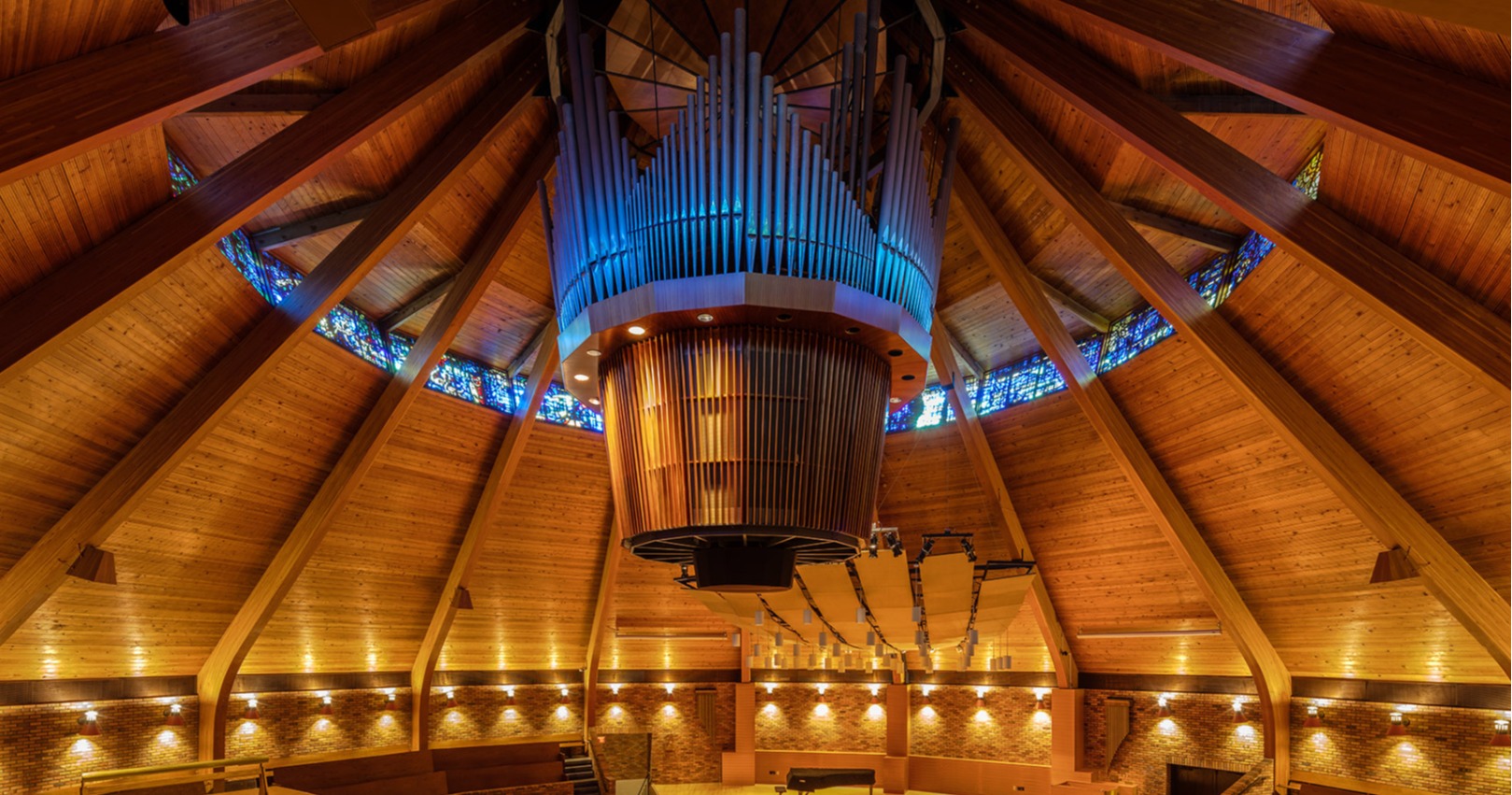

Portland, OR

Completed in 1971, the iconic Casavant organ at Lewis and Clark College in Portland, Oregon, continues to astonish people. This engineering tour the force remains an admirable achievement in the history of our firm.
The 460-seat Agnes Flanagan Chapel’s impressive contemporary lines and distinctive conical shape incorporate a strong Northwest Coast Native American influence. It was designed by architect Paul Thiry, known as the father of architectural modernism in the Pacific Northwest.
Casavant stood out of its competition, thanks to its very creative approach on the project, respecting the architecture of the building while providing an innovative solution to where to place the main organ. The selection committee was impressed by how much flexibility we offered in our designing process.
As the space did not allow there to be a good-sized pipe organ on the floor, it was decided to literally suspend it in the center of the chapel from the pinnacle of the chapel ceiling. The suspended portion of the organ contains 56 ranks of pipes and weights about nine tons!
Designing this unique organ required both amazing creativity and outstanding exactness in establishing the requirements for its long-term reliability and serviceability, along with ensuring the safety of people visiting the chapel.
While one could think that the sound of such of visually distinctive instrument might be peculiar, its tonal approach is remarkably disciplined, as one may expected of a Casavant organ designed by Lawrence Phelps.
The expressive Choral and two Continuo divisions (23 independent stops and 29 ranks of pipes), which were installed in 1973, are placed in the choir loft, with the organ console.
The organ casework was designed and made by Casavant; the steel supporting structure, rods and metal framework were provided by the College.
Inaugurated on April 11th, 1971, by the famous American organist, Virgil Fox, the organ has been used ever since in a very prolific music program, even during the very first year, when Marie-Madeleine Chevalier-Duruflé accompanied her husband’s famous Requiem.